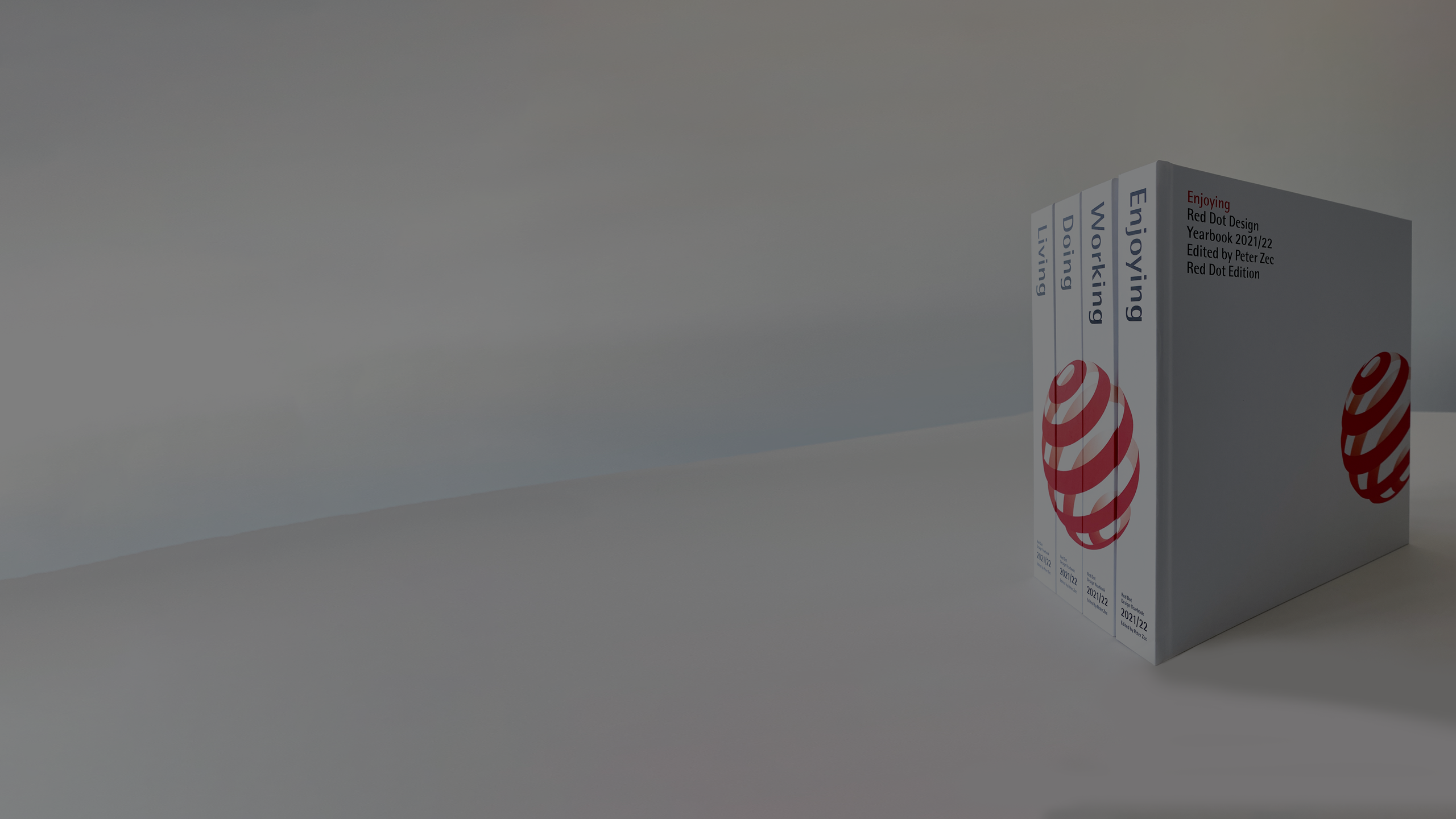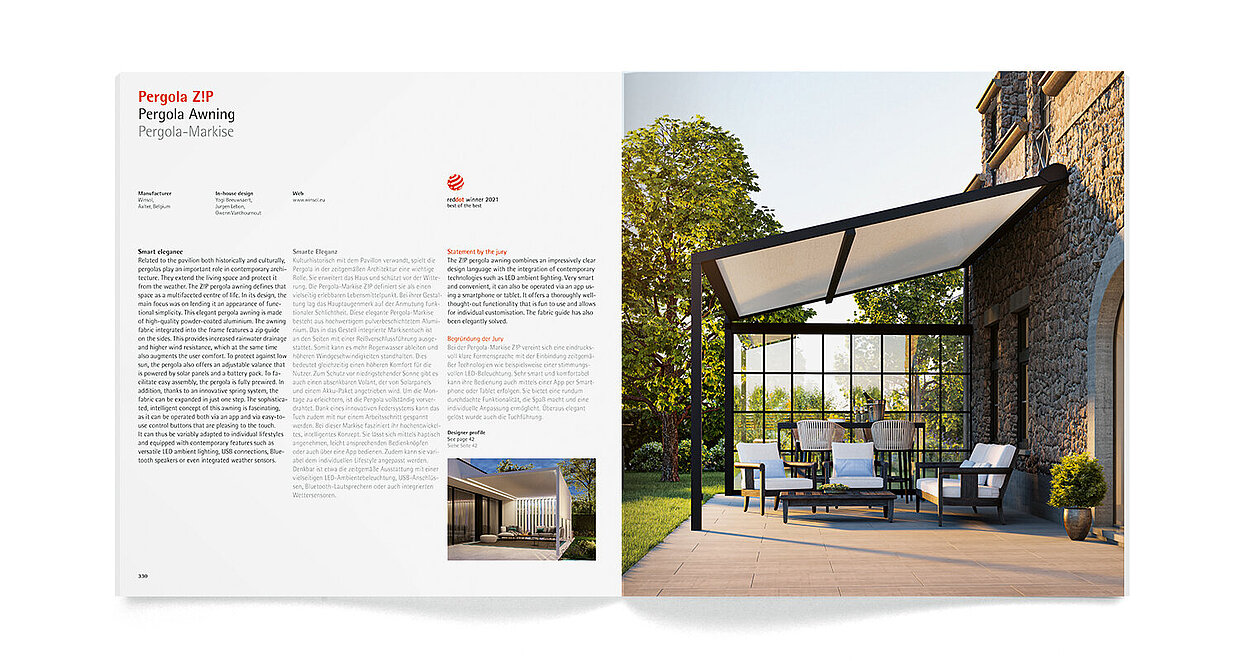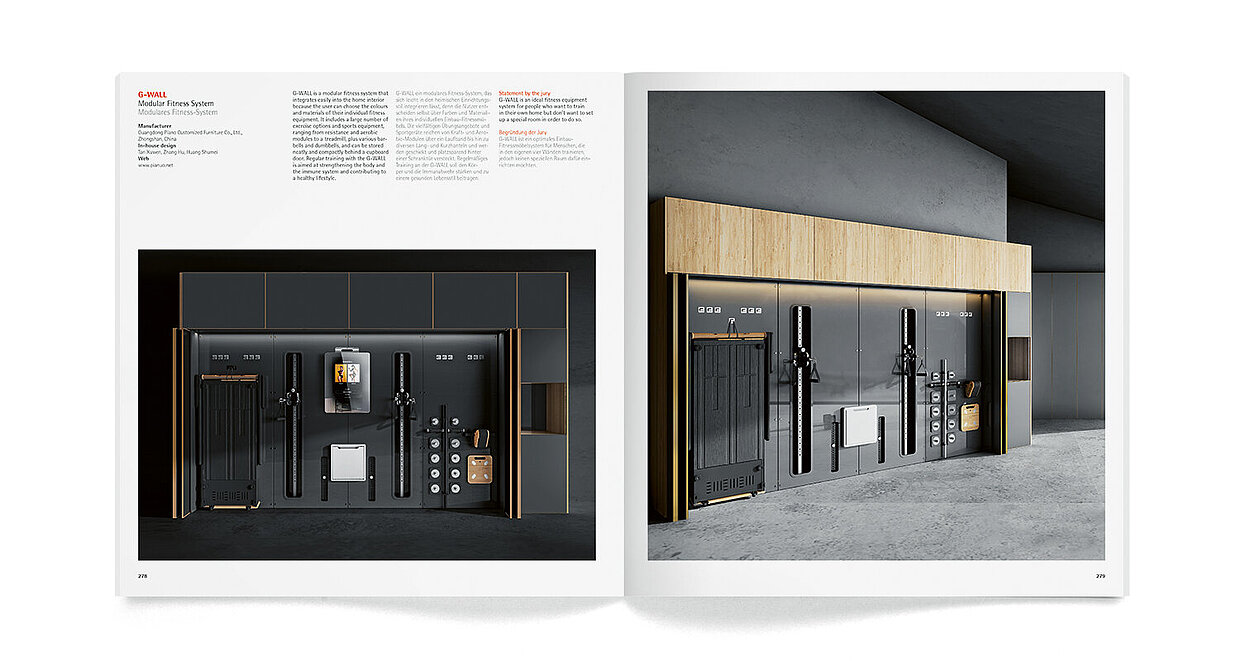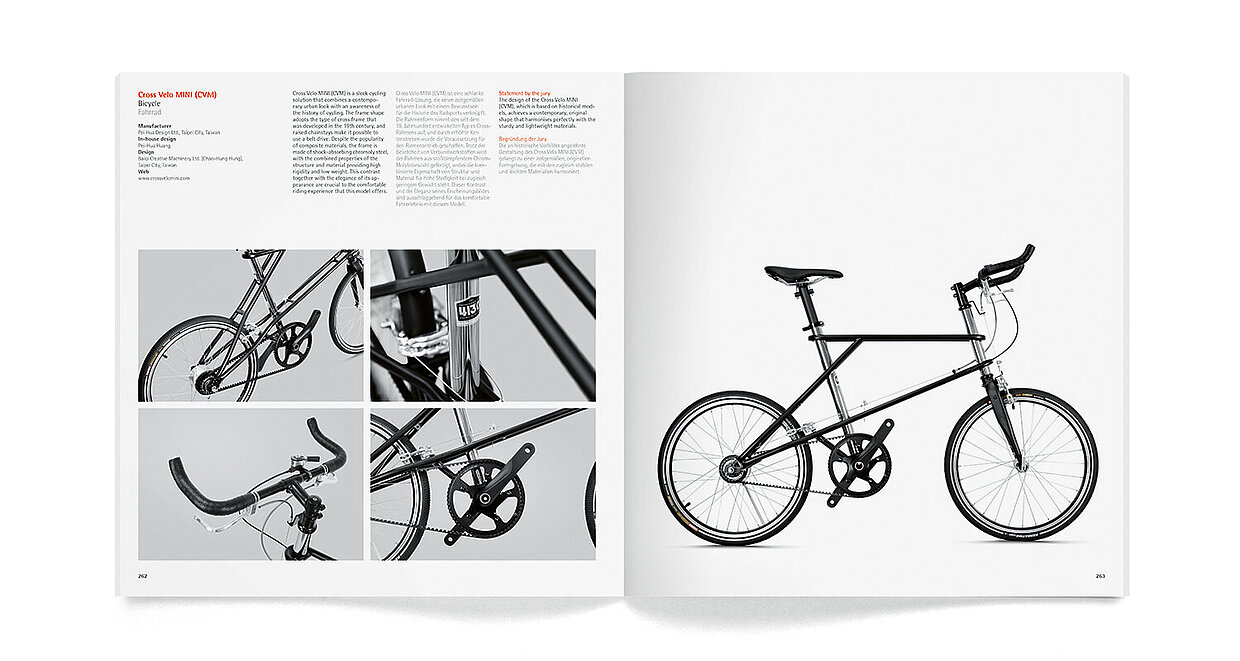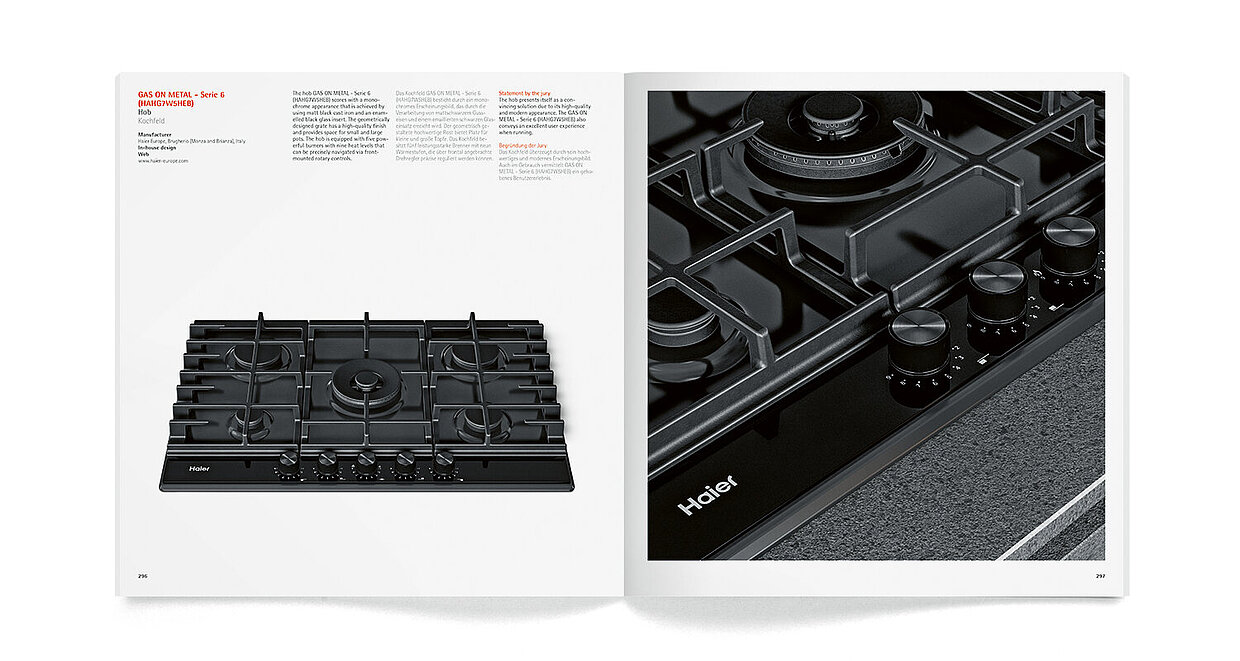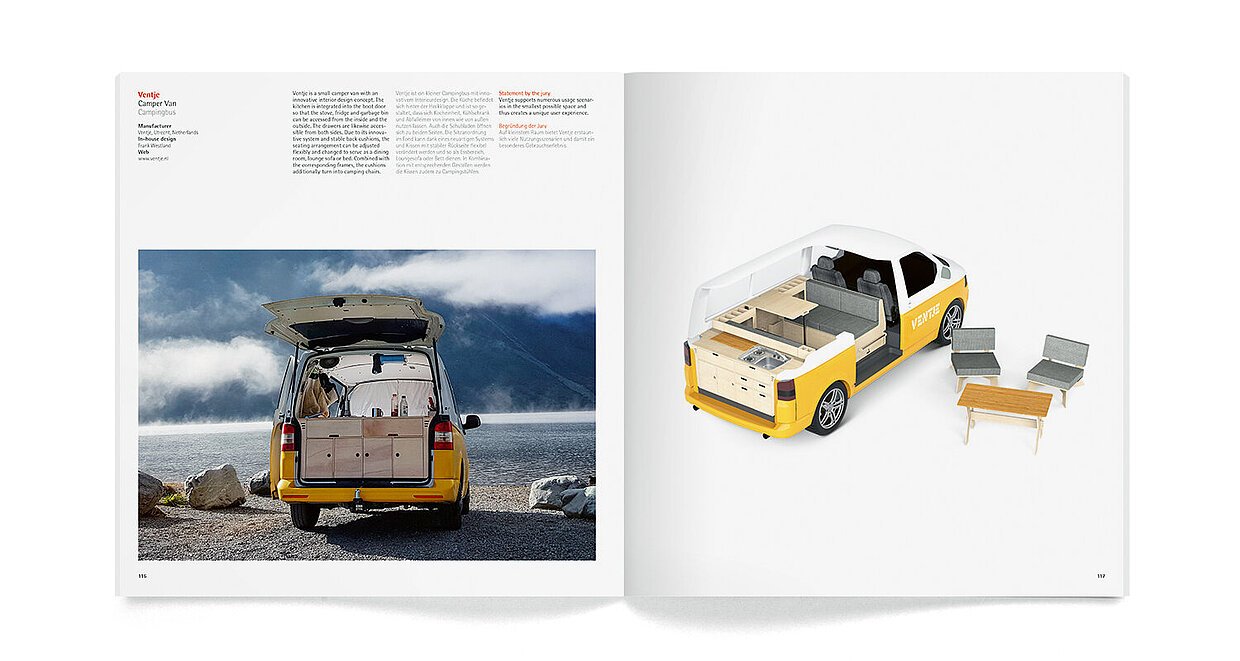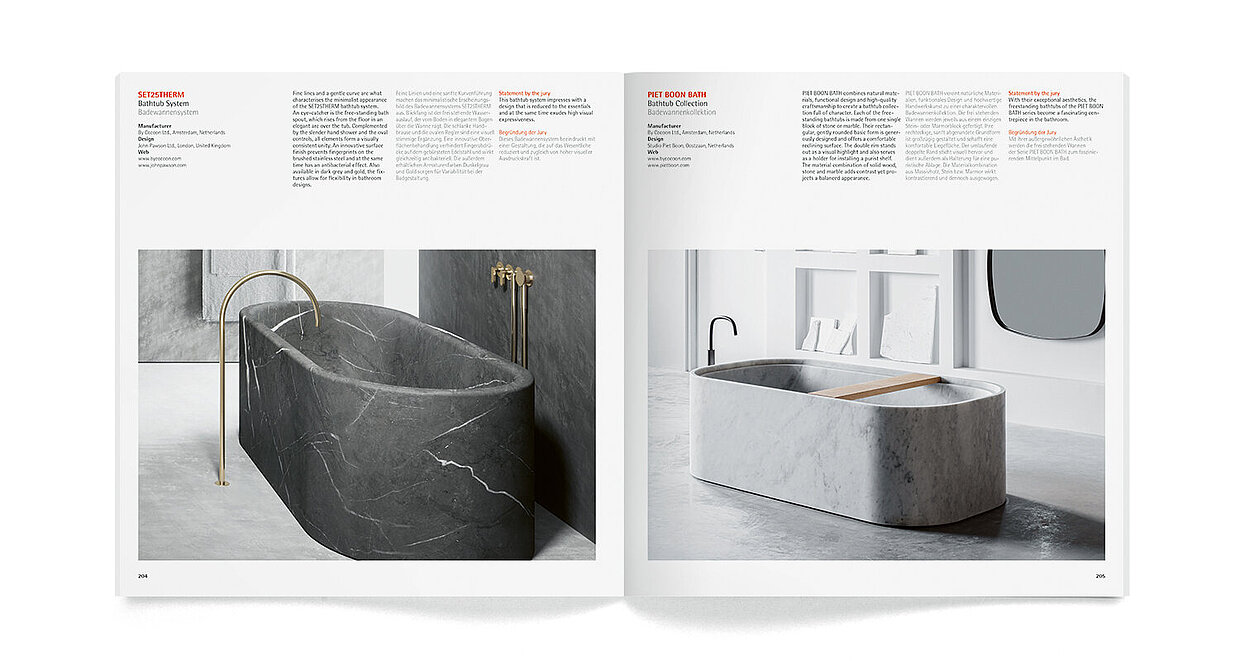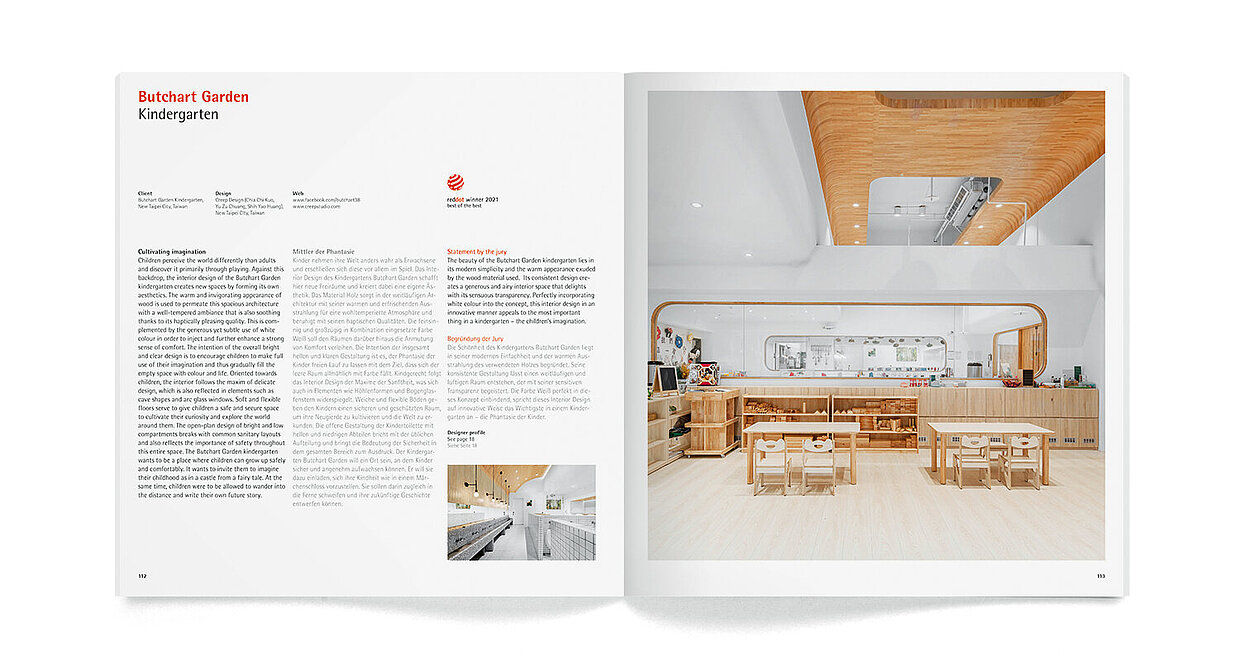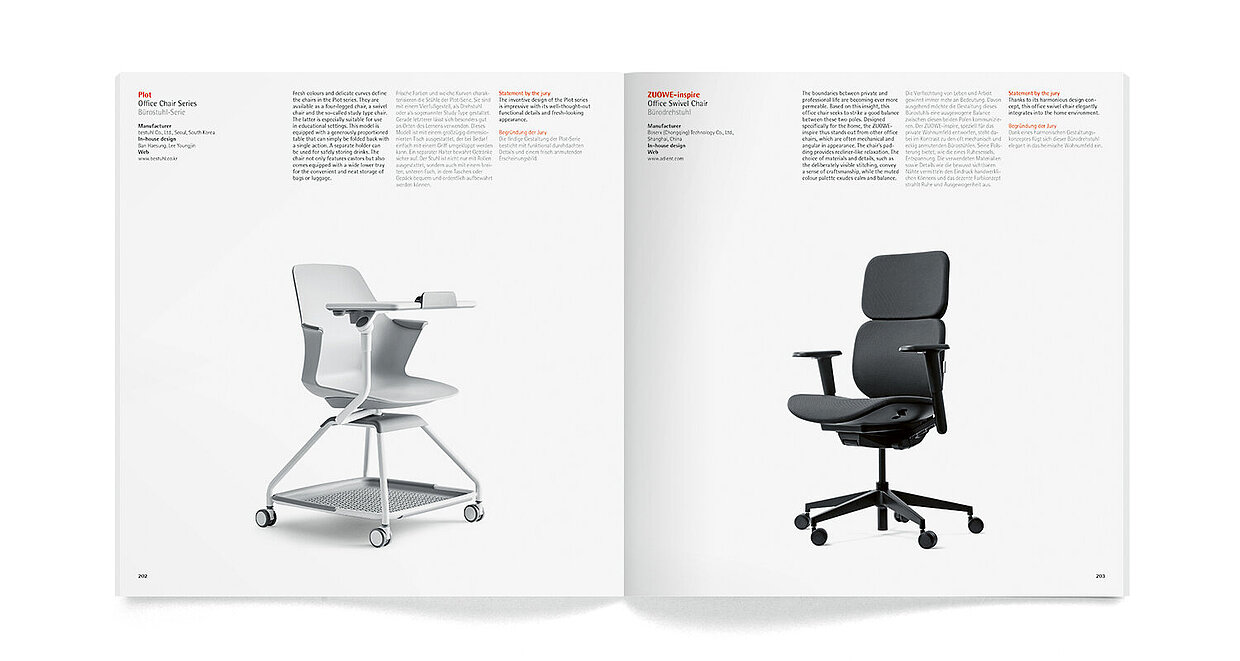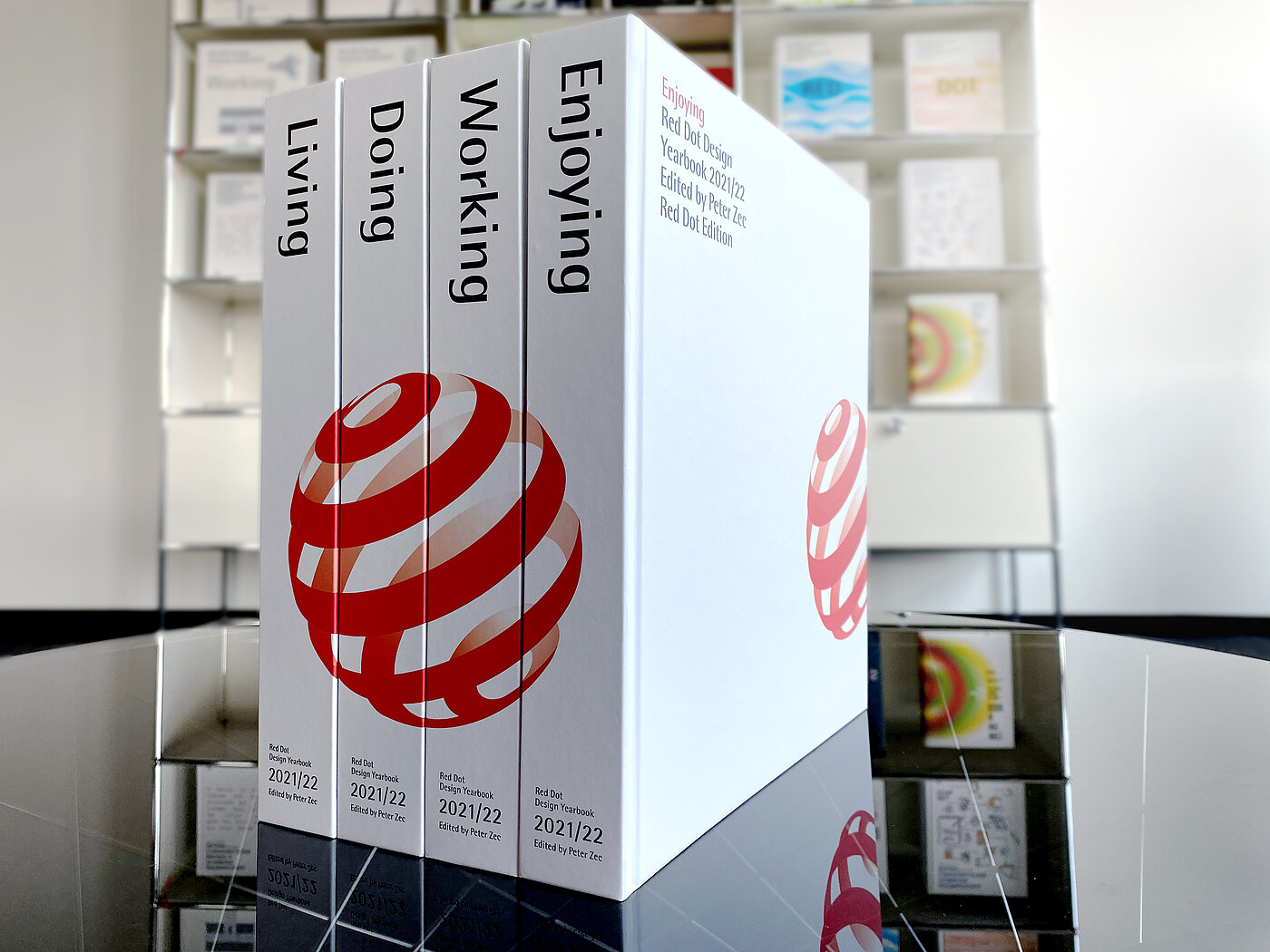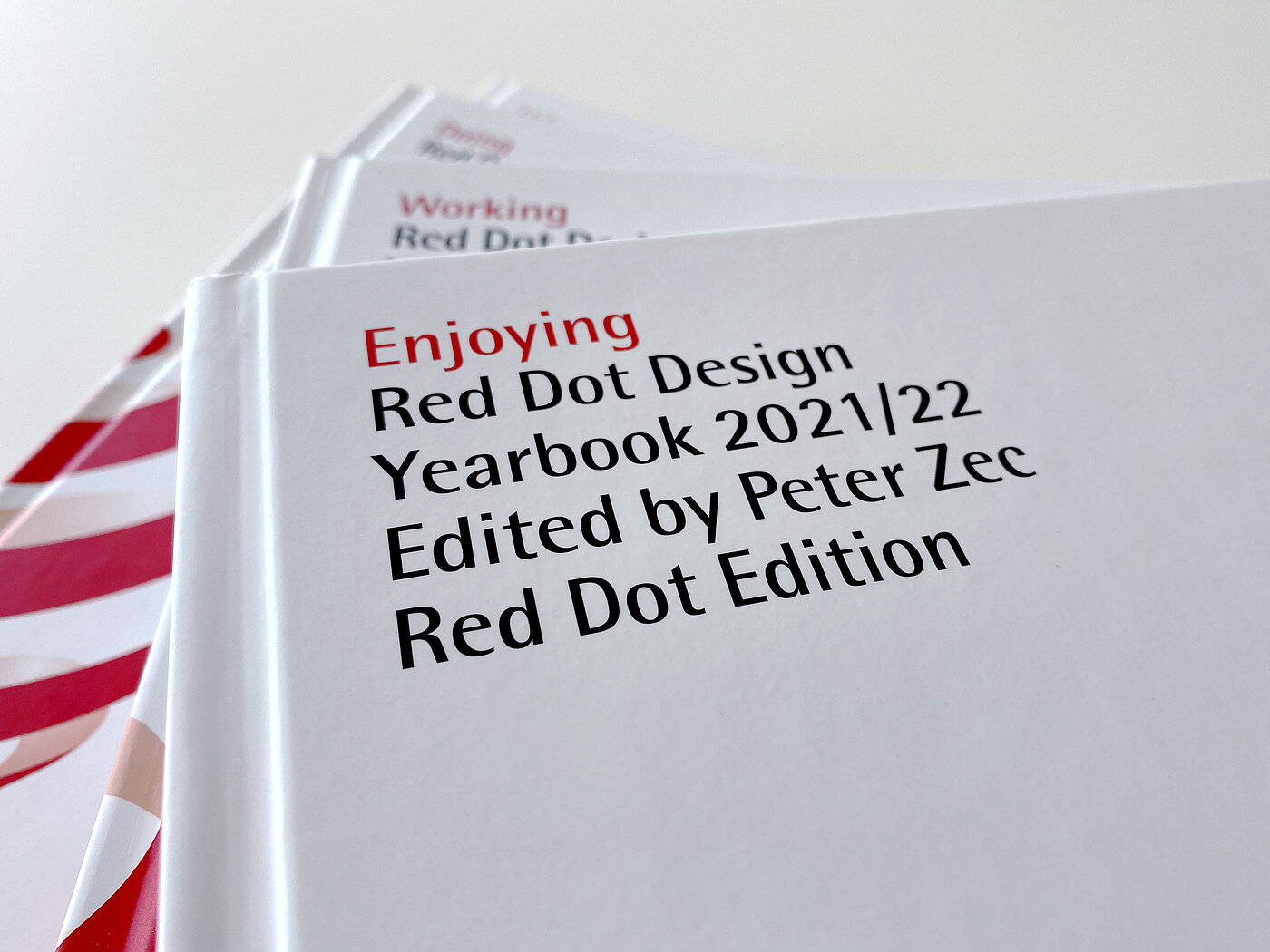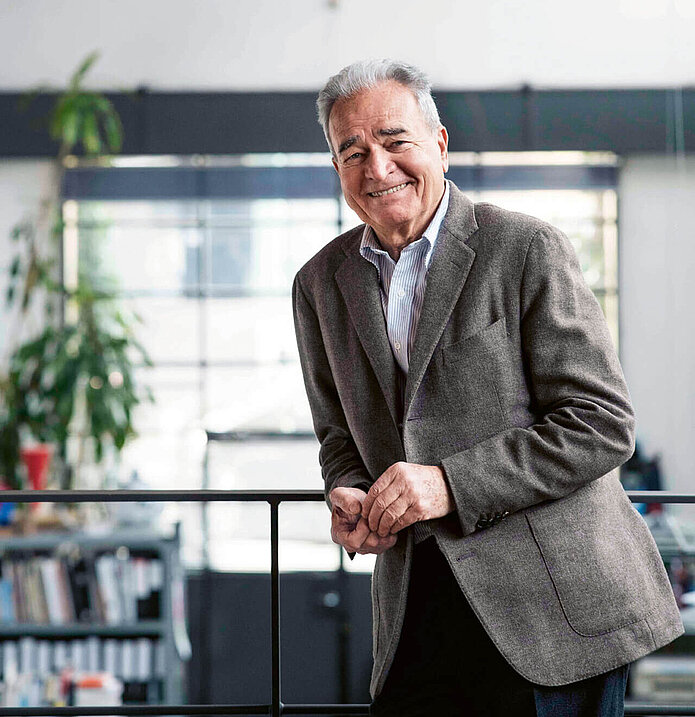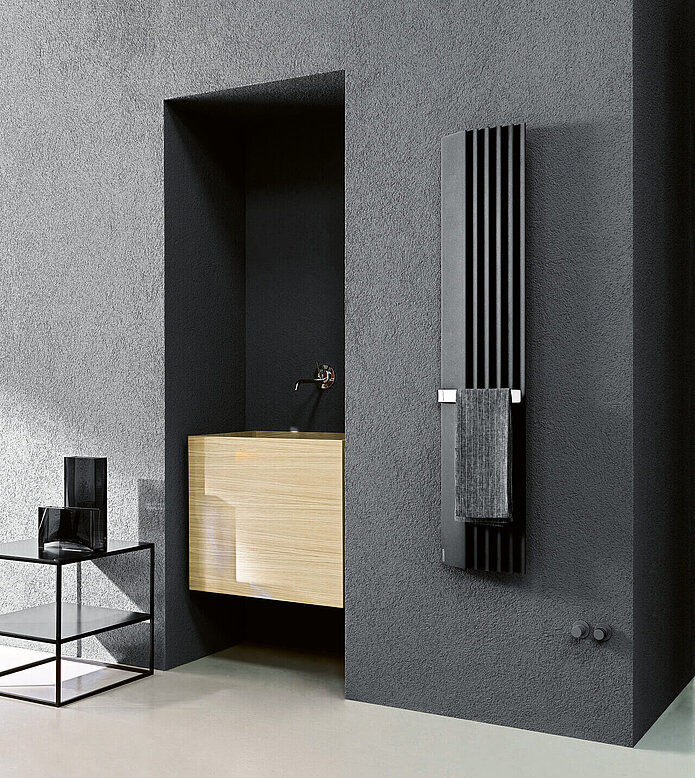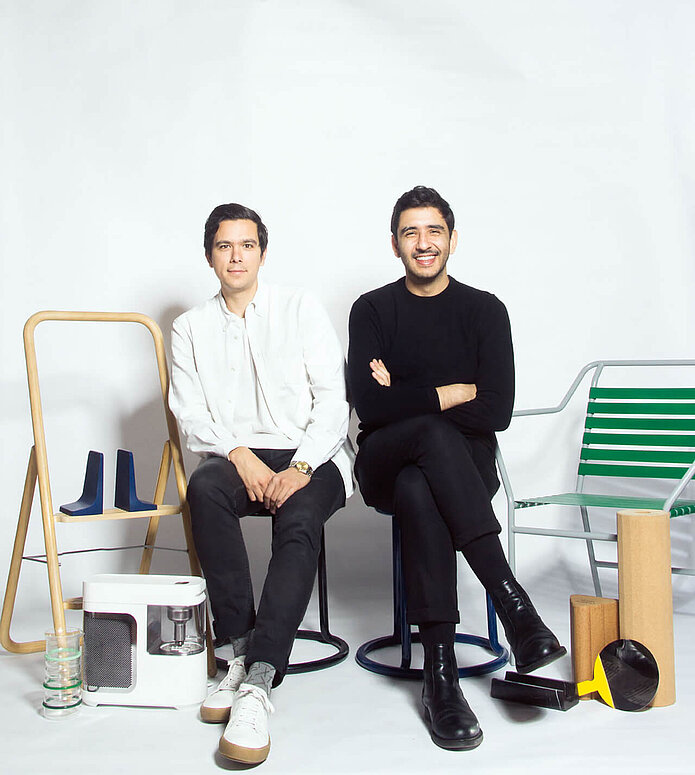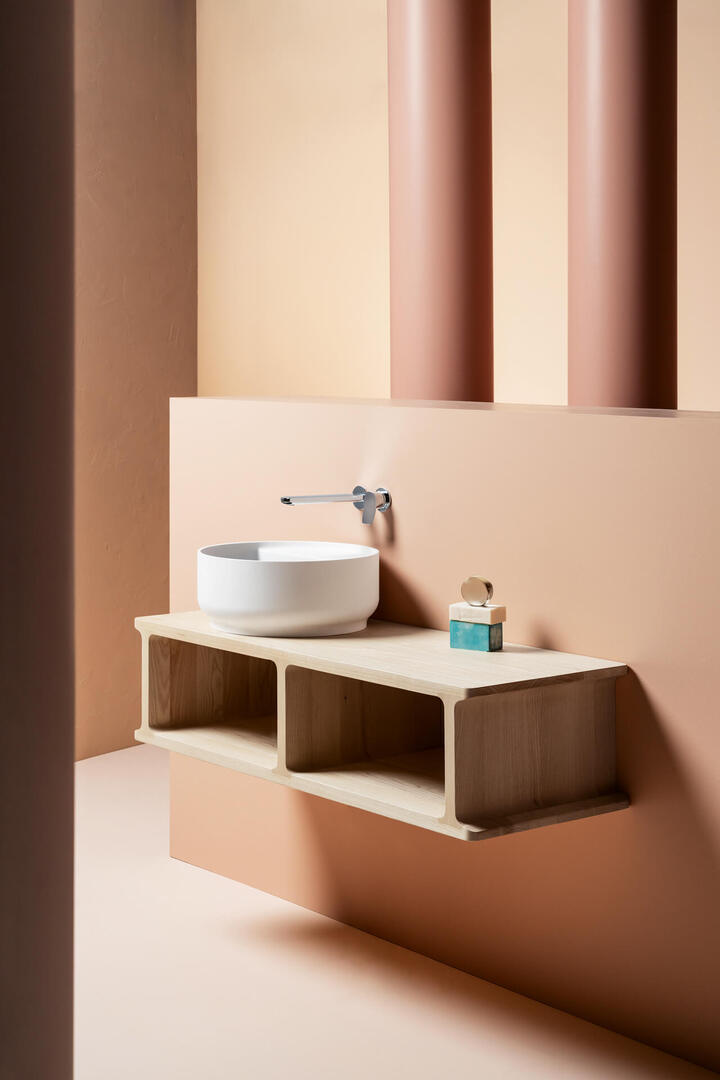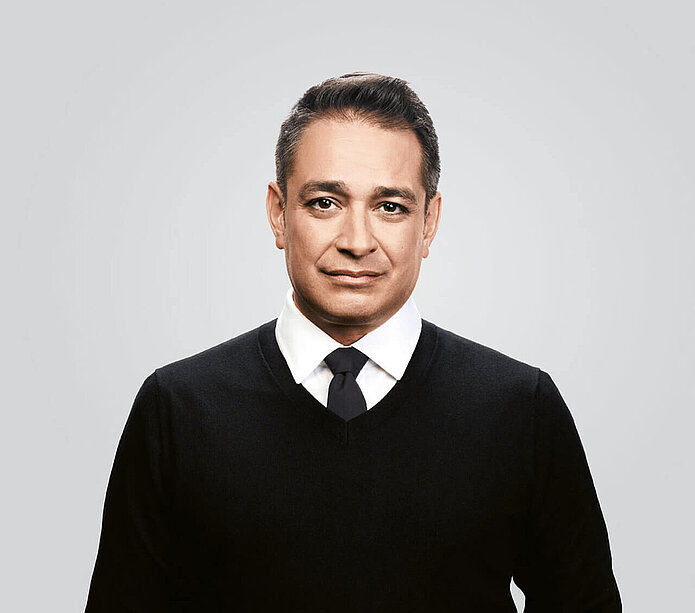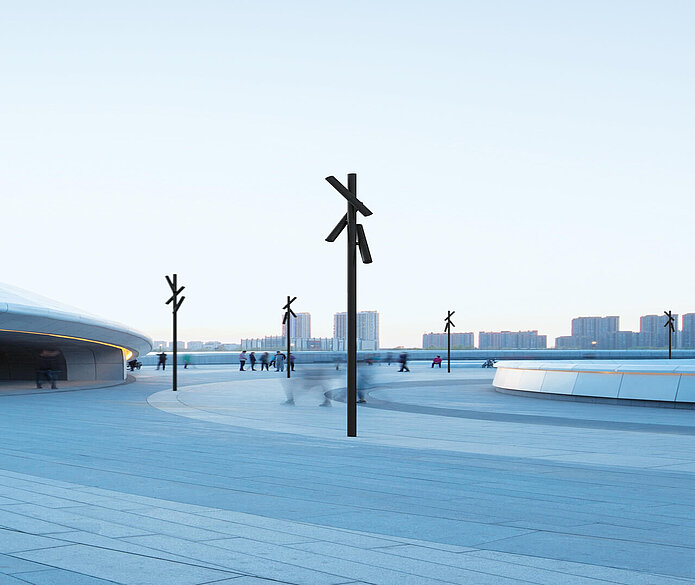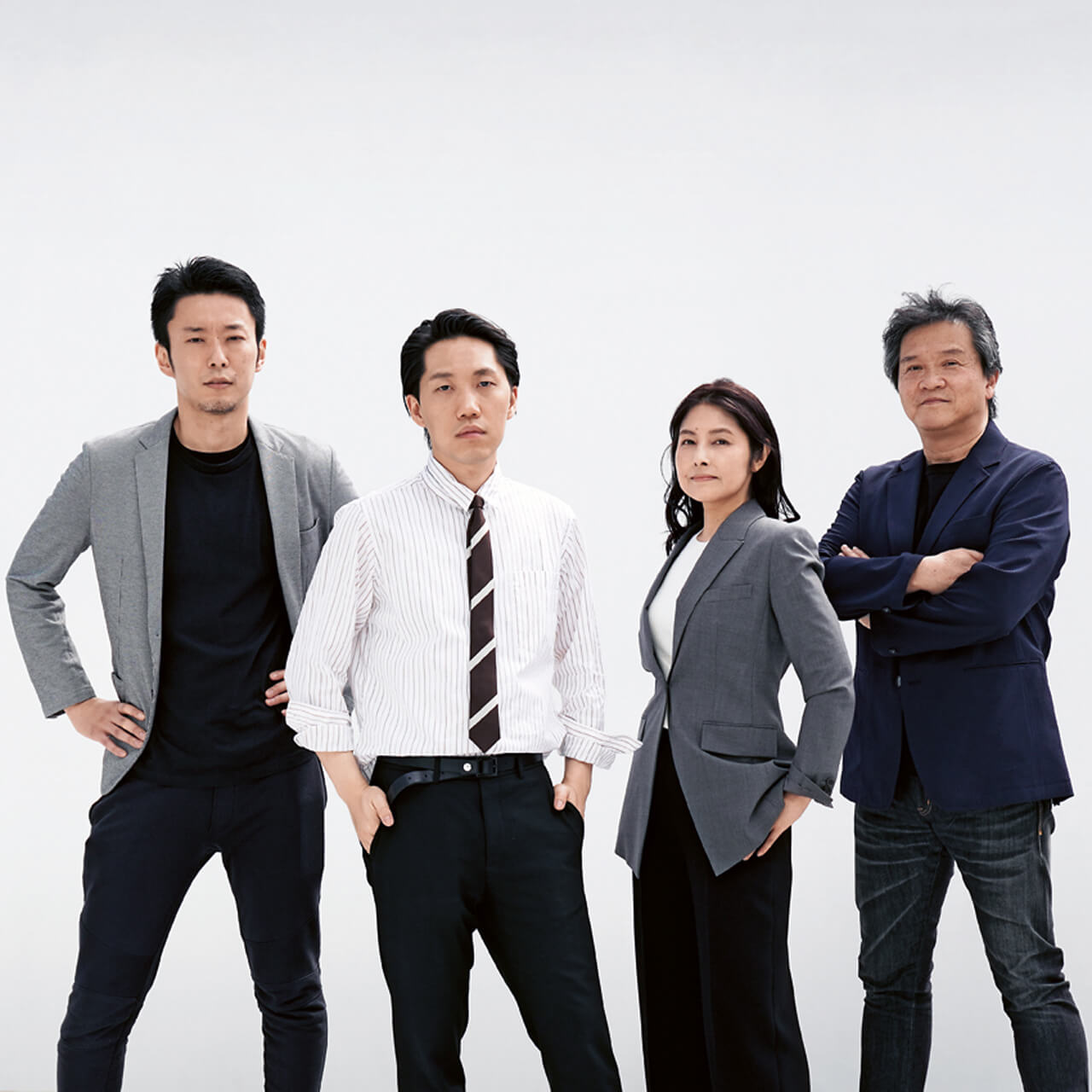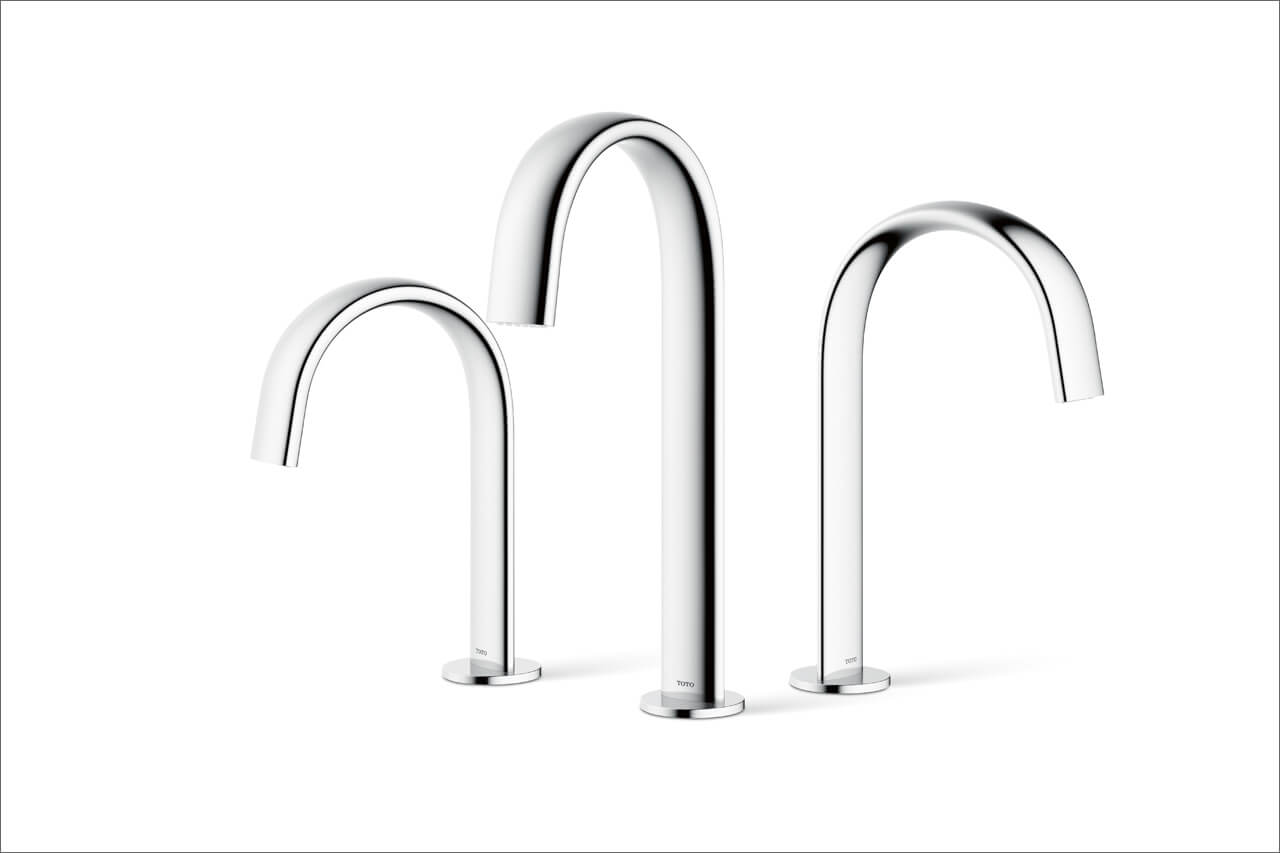State of the art in product design
In four volumes, roughly 2,000 pages and 10,000 copies, the Red Dot Design Yearbook 2021/22 presents the award-winning products in the Red Dot Award: Product Design 2021. This constitutes a unique overview of the state of the art in product design. From “Living” and “Doing” to “Working” and “Enjoying”, each of the volumes deals with one specific topic. You can experience the whole world of design with all four publications, but it’s not just their content that complements each other. The special feature of the cover comes to light when the volumes are placed side by side on a shelf, with the spines combining to create the Red Dot that symbolises good design.
Another highlight of the publication are the interviews it features. For example, Red Dot spoke to Roland Heiler and Christian Schwamkrug from Studio F. A. Porsche, the Red Dot: Design Team of the Year 2021, about brand values, the key to success, sustainability and challenges in their day-to-day work. Individual interviews are used to introduce the designers behind the year’s best products. Also, the jury members for the competition present the products that particularly impressed them.
Alberto Meda speaks about the radiator “Step-by-Step” he designed
Red Dot: What problem does Step-by-Step solve?
Alberto Meda: The idea was to make a radiator with a very simple appearance, which sits as close to the wall as possible. I had to change the ribs’ angles and integrate as much function as possible to achieve a less aggressive look.
How do you approach a new product?
The starting point is to care about the relationship between different components of the product and the relationship between the product and the user, and not to be obsessed with the form. If you focus on the relationships, in the end, the form reveals itself. It is not something you imagine in your head. It is something that just happens.
Step-by-Step allows for numerous possible combinations. How important is flexibility?
Flexibility is essential today because we all have a different relationship with the product depending on our habits and our culture. Therefore, it is crucial to design products with a certain degree of freedom.
Do you have a primary goal that you strive for with all your designs?
Lightness has become a paradigm in my way of thinking. And I try to produce a simple appearance while using complex technology to solve a problem, because as a user, you don’t want to know what’s going on inside. You want a simple relationship with the object – and this simplicity is complexity solved.
What distinguishes contemporary Italian design?
It’s hard to say because we have different approaches. But probably a humanistic approach is in the mindset. You use your creativity, your inventiveness and try to find a solution that makes life better.
Sina Sohrab and Joseph Guerra from Visibility talk about their daily work routine
Red Dot: How would you describe Visibility’s overarching design language?
Sina Sohrab: We look to reduce all the products we take on to the elements that are necessary while keeping a sense of familiarity for the consumer, and then we introduce something that wasn’t there before.
How do you make it possible to design such a product?
Joseph Guerra: If it’s a broom or a washbasin, we look at the history of that object to understand where it’s coming from and how it arrived in the present. Then we try to take something from that and refine it until it feels bold, useful, but kind of radically new.
What questions do you ask at the beginning of a design process?
Guerra: I look at why a product exists in the first place. Then, I start asking why it is shaped the way it is shaped, why it is in the material that it is typically in, and I try to figure out how we can enhance something.
Sohrab: That kind of questioning leads you to make choices early on. We went with Beam as a stand-alone object. It has its own presence in the bathroom rather than being an architectural feature that fades away.
What inspires you most in your work?
Guerra: I love everyday products that feel almost undesigned like they exist forever in one way – and I find more of those when I am travelling abroad.
Sohrab: That is a shared sentiment. The everyday routine is especially interesting, watching people go about their day and watching the interactions they have with things.
Carlos Madrid III from Skidmore, Owings & Merrill speaks about the Nebula outdoor lighting collection
Red Dot: Can you explain your role in the Nebula project?
Carlos Madrid III: The project was a very collaborative one between the manufacturer, the lighting designer, and me as architectural designer. It was pretty equal and amazing.
What were your first steps in this design process?
We did a survey to understand what was needed in the market. Once we figured that out what the product should look like, we created many different options between the lighting designer, myself and my team. From there it was a question of figuring out adjustability, flexibility and how we can deliver the highest number of options. The way in which we arrived at the solution between the three different groups was very fluid. It was a great process.
Regarding the iconic appearance, what role did the observer play in your concept?
The aesthetic was very important. We took liberties by making the head of the fixture a little bit longer to ensure the proportion and the statement would be different to what is on the market, but we did not want anything exaggerated that would become dated. We also asked ourselves what the lighting system would look like during the day, which also determined the overall shape and materiality.
In your opinion, what should be particularly important in a public lighting solution?
It needs to be respectful of its environment and attempt to be as classic and timeless as possible. We want to beautify our cities not just today but tomorrow because the lighting system is going to be there for 20, 30 or maybe more years.
Takanori Shimazoe, Bowen Peng, Rina Ogata and Atsushi Toyohara from TOTO talk about their design approaches
Red Dot: How would you sum up the recognition value of your products?
Our products are designed according to the Life Anew concept, ensuring cleanliness, wellness and sustainability for our customers. As a Japanese brand, we also aim to share Japan’s culture of cleanliness with the world.
How creative can or dare design be?
Design is thought of as something to solve people’s problems and respond to potential needs, but we believe that it can do far more. We consider it the mission of design to create a future that hasn’t yet been imagined and to make that future a reality.
How important is the issue of sustainability for you?
Sustainability is not just an issue related to the relationship between people and nature. We can achieve a sustainable society only when people from different countries and regions cooperate together by respecting and understanding one another.
What benefits do you expect artificial intelligence and the digitisation of society will bring?
It is a chance to re-examine human manufacturing up to the present. We will have more time to spend on creative activities moving forward and new forms of creativity may emerge through AI. The concept of communication itself must also be revolutionised. The ways we communicate with one another are already rapidly changing, and the birth of communication between humans and AI and between two forms of AI will bring further changes to the diversity within our society.

